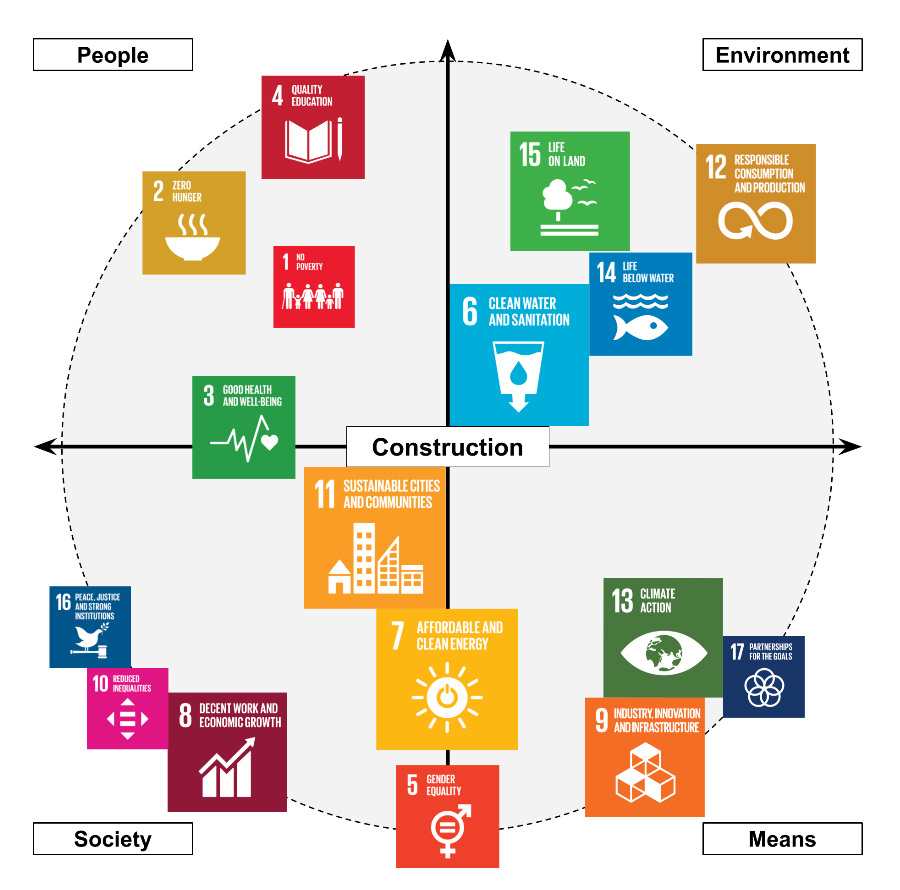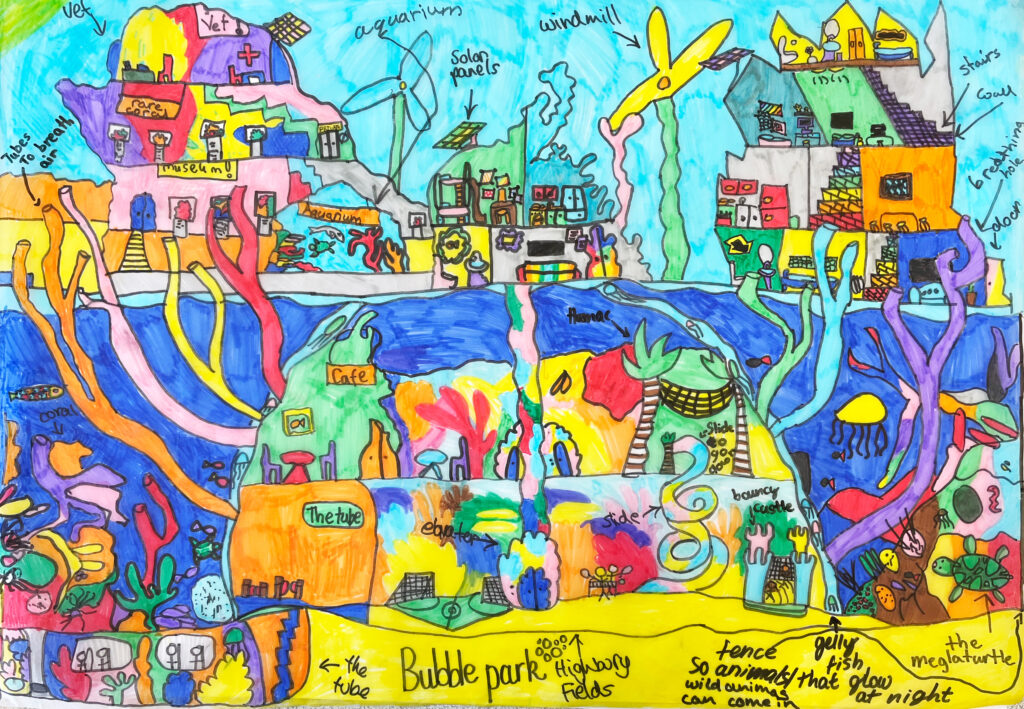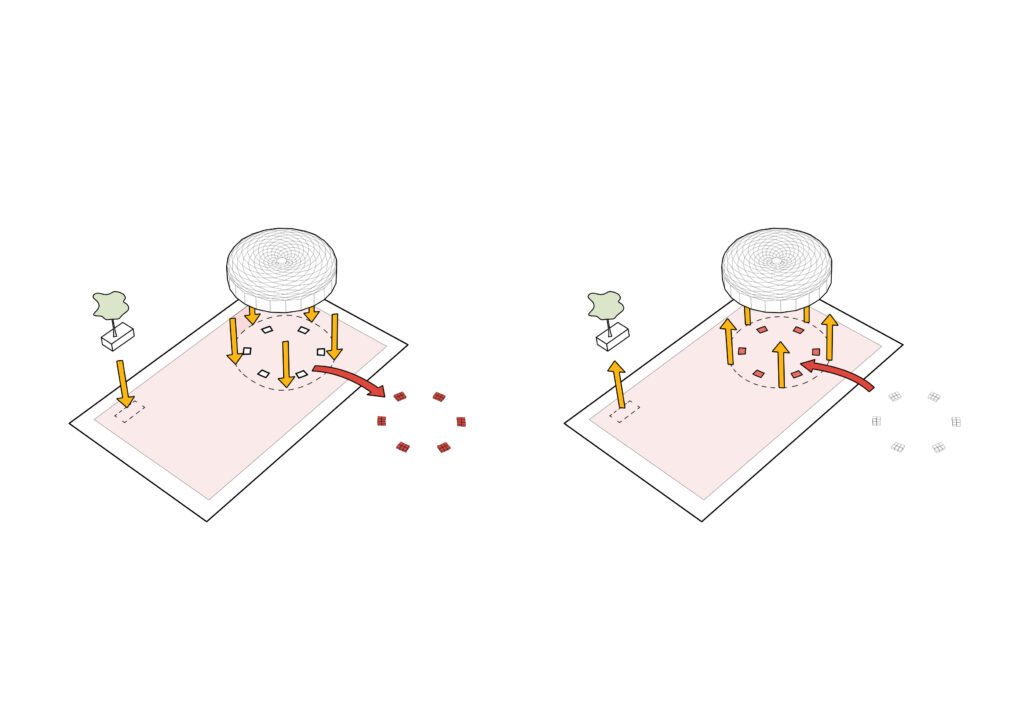
In addressing 21st-century challenges such as air pollution, mental health issues, and environmental degradation, architects play a pivotal role in shaping sustainable, resilient, and inclusive places to live. At the core of this transformative journey are the United Nations Sustainable Development Goals (UNSDGs), serving as a blueprint for creating a safer and more prosperous future for all. Within the UN's framework of 17 interconnected goals, several directly relate to architectural practices, underscoring the crucial role of the built environment in driving positive change.

UNSDG 11 focuses on creating inclusive, safe, resilient, and sustainable cities. Architects play a fundamental role in designing urban spaces that promote accessibility, affordability, and cultural preservation. By developing innovative solutions like green infrastructure, efficient public transportation, and mixed-use developments, architects contribute to fostering vibrant, livable cities for everyone.
In Paju Farm City, we reimagined urban living by bringing agriculture, raw nature, renewable energy, and waste systems into the heart of the city. We've created a closed loop of food and energy, where waste becomes power and agricultural practices are integrated with the city's daily life. The city is laid out as a walkable paradise, fostering community through shared farms and markets.
Affordable and clean energy is essential for sustainable development. Architects are at the forefront of integrating renewable energy solutions into the built environment. From designing energy-efficient buildings to incorporating solar panels and other renewable technologies, architects are paving the way towards a future powered by clean and sustainable energy sources.

Climate change poses a significant threat to our planet, making Goal 13 a critical focus. Architects are exploring climate-responsive designs, emphasizing natural ventilation, daylighting, and materials with low environmental impact. Additionally, architects are promoting green building certifications, encouraging the construction of climate-resilient structures that minimize carbon footprint and enhance environmental sustainability.
Architects and designers can also make significant contributions by investing their time and effort in educational initiatives, such as supporting the endeavors of organizations like Climate Change All Change charity, whose current projects bring designers and school children together to co-create solutions to the climate crisis.

Creating environments that promote good health and well-being is a fundamental aspect of architectural practice. Architects are designing spaces that enhance mental and physical well-being, incorporating elements such as biophilic design, access to natural light, and recreational areas. By prioritizing the health of building occupants, architects contribute to fostering healthier communities.
Our previous article explains how we designed The Living Lab, a workplace focused on enhancing employee's wellbeing, and how a pilot study measures the impact on employees' well-being.

Architects are championing responsible consumption and production by embracing sustainable building materials, promoting recycling practices, and advocating for adaptive reuse of existing structures. By encouraging mindful consumption and minimizing waste, architects are leading the way towards a more sustainable approach to construction and design.
Our design for The OWO pavilion considers the entire lifecycle of the building, encompassing not only its initial construction but also the afterlife of the materials and components. Both the pavilion and the accompanying water fountain have been crafted for disassembly, ensuring that they can be easily taken apart and relocated as needed. The historic coblestones are stored in a storage room on site, which can be re-laid should the pavilion be relocated one day.

In the pursuit of these UN Sustainable Development Goals, architects are not just designing buildings; they are envisioning and creating sustainable communities that stand as testaments to human innovation, creativity, and compassion. As we move forward, it is crucial for architectural practices to continue integrating these goals into their designs, fostering a future where the built environment aligns harmoniously with the well-being of both people and the planet. Together, architects and the UNSDGs are paving the way for a brighter, more sustainable tomorrow.